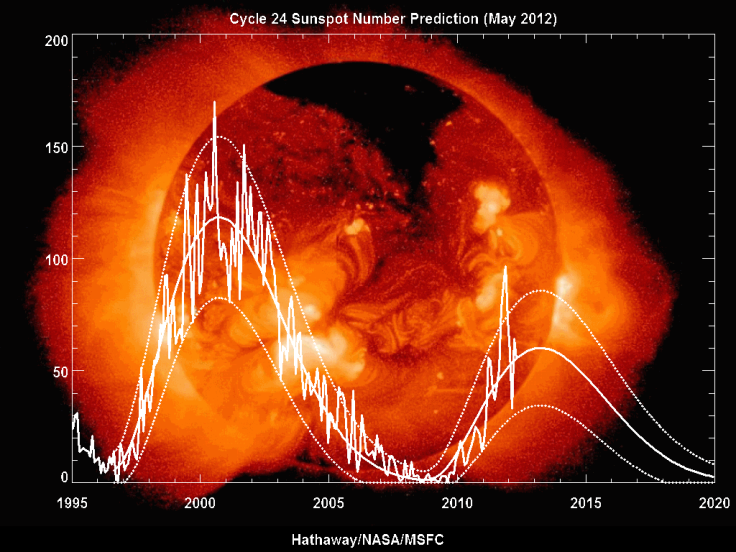Solar Max Is Here Says NASA But Due To Weak Solar Cycle 24 Activity It's A 'Mini-Max' [VIDEO]

Solar Max is finally here, says NASA. The peak of Solar Cycle 24 has arrived, the sun's magnetic fields have flipped and the second-half of the cycle is officially underway.
Astronomers have been eagerly waiting for Solar Max since 2013. In August, solar physicists from Stanford University said the sun's north pole had already flipped and the south pole would flip in the near future, either at the end of the year or early 2014. Scientists waited, and waited some more, before they could officially mark the midpoint of Solar Cycle 24.
Dean Pesnell, from NASA's Goddard Space Flight Center, is a member of the NOAA/NASA Solar Cycle Prediction Panel. The group of solar physicists forecast solar cycles including estimates for solar minimum and solar max. Solar cycles usually last for 11 years, although they can be as short as 9 years or as long as 14 years, notes NASA. Solar Cycle 24 began on January 4, 2008 and some solar physicists believed we were experiencing a double peak, with a period of weak activity in early 2013 followed by a second peak in early 2014.
Pesnell explains why the panel believes Solar Max has arrived saying in a statement, "The sun's magnetic field has flipped; we are starting to see the development of long coronal holes; and, oh yes, sunspot counts are cresting."
While Solar Max usually brings with it an increased level of solar activity, solar physicists expect a quiet affair. Ron Turner, Senior Science Advisor to NASA's Innovative Advanced Concepts program, said in a statement, "This solar cycle continues to rank among the weakest on record." The weak peak of Solar Cycle 24 has led the panel to dub it a "Mini-Max."
For the second half of Solar Cycle 24, Pesnell says it will begin to weaken by 2015 which could lead to an increase in solar flares and magnetic storms, reports NASA.
A video explaining the Solar Mini-Max, courtesy of NASA, can be viewed below.
© Copyright IBTimes 2024. All rights reserved.






















